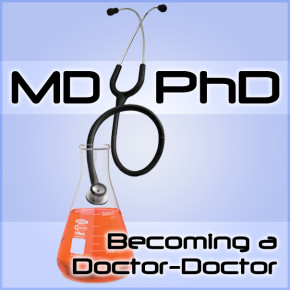 Now that I have finished my PhD and moved on to the rest of my medical training, the last few months have been an interesting change of pace. Since I took first-year medical school classes piecemeal while spending the majority of my time working on my doctoral research, being a full-time medical student now is a new experience (and a culture shock in some ways) for me! I’ve had to reevaluate the utility of my old habits and patterns, create new routines, and learn what works and what doesn’t by trial-and-error. Here are some of the most salient differences I’ve encountered:
Now that I have finished my PhD and moved on to the rest of my medical training, the last few months have been an interesting change of pace. Since I took first-year medical school classes piecemeal while spending the majority of my time working on my doctoral research, being a full-time medical student now is a new experience (and a culture shock in some ways) for me! I’ve had to reevaluate the utility of my old habits and patterns, create new routines, and learn what works and what doesn’t by trial-and-error. Here are some of the most salient differences I’ve encountered:
- I can’t keep up with 30+ journals anymore! — As a graduate student seeking to be well-read, I subscribed to at least 30 journals or feeds (all journals in my field, plus PubMed alerts for all the high-profile authors in my field, plus the high impact journals, plus a handful of medical journals, plus a few other journals not in my research area that were just really cool) using a feed reader. Over lunch or during experimental downtime, I would scroll through the titles and browse through articles of interest. During the first week of medical school, I realized I would be unable to keep up this habit, so I unsubscribed from the majority of these journals (except for Nature, Science, NEJM and a few others), and I’ve been seeking out a few select medical journals in specialties of interest to add to the roster. But, I feel like I’ve already fallen behind the latest news in my area of doctoral research!
- Medical school is about learning breadth over depth (and sometimes breadth and depth) — While I did learn a lot about overarching theories, experimental practices, and key findings in my areas of graduate study, most of my time in graduate school was focused on my small niche of experimental focus. It didn’t matter at all if I knew very little about transposons or RNA splicing as long as I was an expert in chemotherapeutics targeting tumor glycolysis. (Matt Might’s “Illustrated Guide to a PhD” is a good illustration to what I mean). As a second-year medical student, the volume of diverse information we cover and are expected to internalize in a single week is enormous. In our first five weeks of second year, we went through 10 chapters of Robbins in pathology and over 300 antibacterial, antiviral and anthelminthic agents in pharmacology (and that’s not even counting what we did in our other classes!), and we were tested not only on broad concepts but on minute details.
- What do I do with all of this unstructured time? — As a graduate student, I was expected to keep regular hours in the lab. As a second-year medical student, in my last year of classes before we hit the wards, we have class and activities scheduled for only four to six hours per day. The rest of the time is ours to allocate as we see fit. It’s a lot of independence (which I love), but that means the burden of accountability to get our work done is placed on us, rather than being imposed upon us by our PIs or bosses. I’ve enjoyed the freedom to be able to shop for groceries in the middle of a weekday afternoon and hang out at home with my cat more — his routine has been disrupted, as he is not used to seeing me this often!. Still, it’s sometimes difficult to find the self-discipline to get through all of the material we cover when we have so much “free” time on our hands.
- What do I want to do with the rest of my life? — During the last few years of my PhD, I had tunnel-vision: I was so focused on my research, manuscripts and trying to finish that it was hard to think about my long-term goals beyond finishing graduate school. Now I am about seven months away from taking USMLE Step 1, about eight months away from beginning clerkships, and about 20 months away from submitting residency applications. It’s a lot to think about! I’m doing my best to identify areas of medicine that fit my personality and that will offer me opportunities to teach and do research — and thus utilize the research experience and credentials I’ve spent the last five years building. Hopefully the coming months will give me some clarity here.
Though I am still adapting to the lifestyle and culture of medical school after so many years of being a bench scientist, I’ve really enjoyed these last few months as a full-time medical student. I am invigorated by learning the foundations of clinical medicine, and I’m excited to hit the wards in 2015. Though my days of pipetting and running Western blots are done — for now — I am thankful to have learned and developed the skills I did during graduate school, and I look forward to translating these skills to medicine in the coming years.
MD/PhD: Becoming a Doctor-Doctor
This column explores the MD/PhD career track from a current trainee’s perspective, including the benefits and challenges of pursuing two doctoral degrees simultaneously, time management and life balance, and post-graduation training and career opportunities.

